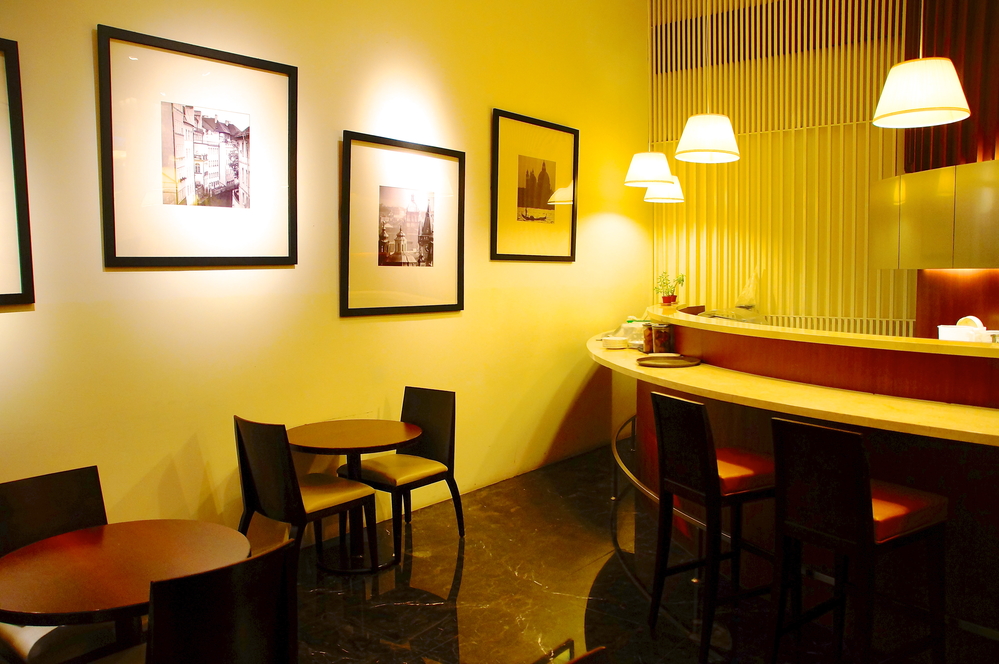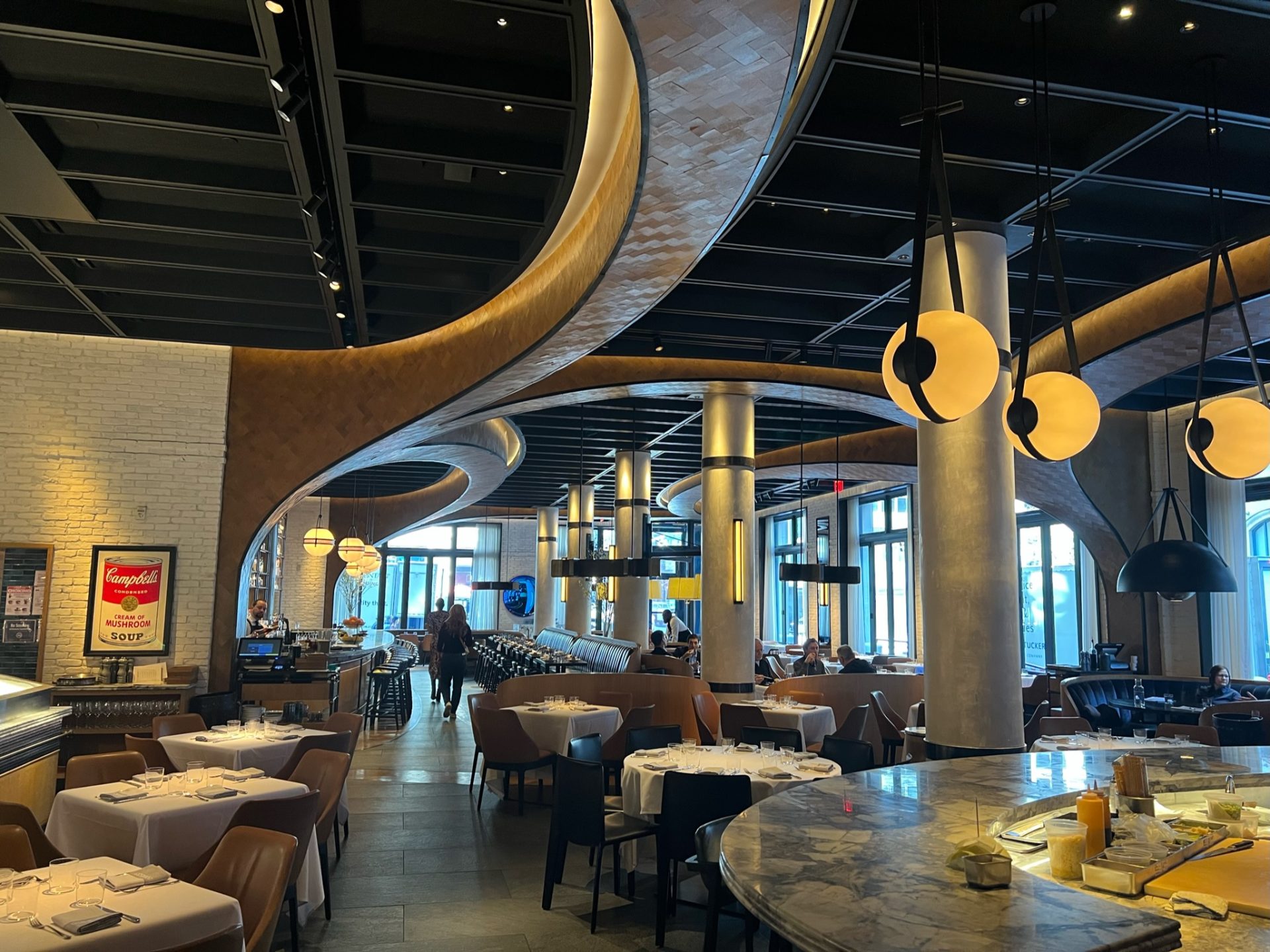Asian Fusion Restaurant: An Unique Dining Experience in the Heart of Islamabad
Asian Fusion Restaurant: An Unique Dining Experience in the Heart of Islamabad
Blog Article
Savor Authentic Asian Cuisine With a Pan-Asian Spin for a Culinary Experience
Starting a culinary trip via genuine Eastern food, improved with a Pan-Asian twist, uses a special possibility to explore the abundant tapestry of flavors that specify the area's diverse culinary traditions. This experience welcomes you to appreciate the splendid equilibrium of tastes-- pleasant, salty, spicy, and sour-- balanced by aromatic natural herbs and seasonings. Visualize the cutting-edge blend of Thai curry and ramen or the unexpected delight of sushi burritos. As you consider these attracting dishes, consider the social stories and historical impacts that shape them, each bite supplying a tale waiting to be uncovered.

Exploring Pan-Asian Tastes
In the realm of global gastronomy, Pan-Asian cuisine attracts attention for its exceptional diversity and the harmonious interaction of flavors from different Oriental societies. This culinary method commemorates the unique components and abundant customs found across the continent, producing a tapestry of preferences that is both interesting and rewarding. Key to Pan-Asian food is its ability to stabilize contrasting flavors-- wonderful, salted, spicy, and sour-- while highlighting the quality and top quality of each active ingredient.
From the umami-rich soy sauce of Japan to the fiery chili peppers of Thailand, Pan-Asian food supplies an extensive scheme of tastes. These elements are frequently integrated in inventive ways, improving dishes with layers of complexity. As an example, using fragrant natural herbs such as lemongrass and cilantro, common in Vietnamese and Thai cuisine, includes a refreshing illumination to dishes, while the unification of coconut milk provides a creamy, rich appearance.
The emphasis on fresh fruit and vegetables and aromatic spices makes certain that each dish is not just a banquet for the taste buds yet likewise for the senses. Pan-Asian cuisine invites diners to begin on a cooking journey, exploring the vast and varied landscapes of Oriental gastronomy with every bite.
Blend Dishes to Try
While Pan-Asian cuisine is commemorated for its standard tastes, the modern-day culinary landscape is progressively welcoming blend meals that blend these classic components with impacts from other regions. This ingenious technique not only honors the abundant heritage of Oriental cookeries however also presents unique preference experiences that interest contemporary palates.
A prime instance of such a combination recipe is the Korean-Mexican taco, where marinaded bulgogi beef is wrapped in a warm tortilla, topped with kimchi and a hot gochujang-infused salsa. This mix weds the bold, tasty tastes of Korea with the lively, fresh components of Mexican cuisine. In a similar way, sushi burritos have gotten appeal, amalgamating the delicate artistry of Japanese sushi with the hearty, hand-held comfort of a burrito, often featuring combination ingredients like tempura shrimp and avocado with a drizzle of wasabi mayo.
One more notable recipe is Thai curry ramen, which infuses the velvety, aromatic seasonings of Thai curry into the reassuring broth of traditional Japanese ramen, producing an unified mix that entices the senses. These combination recipes expand beyond mere novelty; they represent a culinary dialogue in between societies, urging expedition and innovation worldwide of Pan-Asian food.
Necessary Active Ingredients and Seasonings
To truly appreciate Pan-Asian cuisine, one must comprehend the crucial components and flavors that develop its foundation. This diverse culinary design draws from an abundant tapestry of Oriental practices, utilizing an unified mix of flavors and structures. Key ingredients consist of soy sauce, fish sauce, and oyster sauce, which give a mouthwatering umami deepness important to Asian dishes. Complementary to these are rice vinegar and mirin, offering a delicate acidity and sweetness.
Fragrant components are critical, with ginger, garlic, and lemongrass being ubiquitous throughout various Pan-Asian dishes. These ingredients give a fragrant base that boosts the intricacy of flavors. Flavors such as celebrity anise, cardamom, and cinnamon introduce heat and character, echoing impacts from regions like China and India.

Cooking Methods and Tips
Mastering the art of Pan-Asian food needs familiarity with its unique cooking methods, each contributing to the vivid tapestry of flavors this culinary practice is commemorated for. Central to these approaches is the stir-fry, a quick food preparation method that preserves the dietary integrity and vivid colors of components. Making use of a wok, the stir-fry approach enables for also heat circulation, necessary for accomplishing the particular appearance and taste equilibrium of Pan-Asian recipes.
One more basic strategy is steaming, especially prevalent in Chinese food. This mild approach keeps the natural flavors and nutrients of components, making it excellent for seafood and vegetables. Dumplings, a precious staple, frequently gain from steaming, resulting in soft, delicious appearances.
Barbecuing, likewise indispensable, presents great smoky depths to recipes such as Oriental bulgogi or Japanese yakitori (Best ambiance restaurants Islamabad). This method often includes marinading components, allowing tastes to penetrate deeply before food preparation over an open flame or warm plate
Lastly, mastering the art of stabilizing flavors-- sweet, sour, salted, bitter, and umami-- is crucial. Effectively layering these elements can raise a meal from normal to extraordinary, using a complex and satisfying culinary experience that symbolizes the essence of Pan-Asian cuisine.
Dining Experiences Worldwide
Across the world, Pan-Asian cuisine supplies an unequaled eating experience, commemorated for its abundant tapestry of flavors and vivid discussions. This culinary phenomenon has actually gone beyond cultural borders, recording the hearts and tastes of food fanatics worldwide. In cosmopolitan cities fresh York, London, and Sydney, Pan-Asian dining establishments function as fusions where culinary traditions from Thailand, Japan, China, and beyond assemble, supplying restaurants with a diverse mix of meals that highlight the region's diversity.
The global appeal of Pan-Asian food lies in its ability to provide both authenticity and technology. Cooks masterfully marry typical active ingredients such as lemongrass, soy sauce, and miso with contemporary strategies, resulting in recipes that are both acquainted and refreshingly new. This blend permits restaurants to get started on a culinary journey that respects heritage while accepting modernity.
In addition, dining experiences are boosted via thoughtfully designed environments that reflect the ethos of Pan-Asian aesthetic appeals. From minimalist Japanese-inspired interiors to vivid Thai-themed spaces, each restaurant provides a special atmosphere that enhances the cooking offerings. Consequently, customers are not merely eating a dish but partaking in a cultural experience, making Pan-Asian dining a truly global sensation.
Verdict
The expedition of Pan-Asian food uses an extensive understanding of the complex interaction of flavors and cooking practices across Asia. By embracing combination recipes such as Thai curry ramen and sushi burritos, the culinary journey not only highlights the flexibility of traditional ingredients but also showcases cutting-edge contemporary techniques. This gastronomic adventure, enhanced by necessary flavors and cooking techniques, offers a special possibility to appreciate the multiculturalism and culinary artistry that define Pan-Asian food on an international scale.
Beginning on a cooking journey with authentic Oriental cuisine, enhanced with a Pan-Asian twist, offers a special chance to check out the abundant tapestry of tastes that specify the region's diverse cooking customs.In the realm of international gastronomy, Pan-Asian food stands out for its remarkable diversity and the unified interaction of flavors from different Eastern cultures. Key to Pan-Asian food is its el cholo ability to stabilize contrasting flavors-- pleasant, salty, spicy, and sour-- while highlighting the quality and high quality of each ingredient.

Report this page